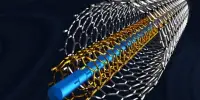The system uses area sensor arrays to detect the location of your ears and to detect sound ‘pockets’. An Israeli company claims that their new device can beam directly to you without using headphones, creating a bubble of 3D sound around your ears that other people cannot hear. Ultrasonic waves then point the sound in a small pocket around your ear to create a 3D experience that no one else can hear. After all, the device keeps tracking your head while you listen, so you keep your head away until you’re in sight of the device.
“When you’re inside a bubble, you’ll find sound, volume, and immersion,” said Ayana Wallwater, product manager at Noveto Systems. “It follows you wherever you go – it’s for you personally”
Uses of technology include gaming and watching movies while working in the office so as not to disturb colleagues. Novato debut its SoundBimaer 1.0 on November 13 and claimed that the technology would “transform the way we perceive audio”.
Loudspeakers use speaker membranes to create sound waves (called isolation) to spread the sound as far as possible over a long distance. So, how does ‘sound beaming’ work? Well, although it has never been packaged in a personal ear tracking device, this kind of directed sound is not a new technology.
However, directional speakers want as little isolation as possible, so they use ultrasonic speakers instead. Ultrasonic waves are significantly less split than normal sound waves, allowing sound to be directed to more precise locations. Think of it as light – the conventional speaker is like a floodlight, illuminating a large area, although ultrasonic speakers are like flashlights.
You can’t hear these ultrasonic waves, but when they affect an object in the case of sound beaming, the object is you they convert the sound they hear into waves.
Once generated, ultrasonic waves are produced by a “custom-designed transducer array” that converts electrical energy into ultrasound vibrations that are directed to your ears by a three-dimensional sensor, where they are converted into acoustic sound, Noveto states that the waves are generated by the Digital Signal Processing Algorithm (DSP), a set of mathematical calculations that manipulate digital signals.
The user doesn’t need a perfect site from your head to the speaker so there are no barriers, so SoundBeam will probably not work when you need a lot of movement if you want to stick with headphones, you head for a run. Wallwater reports that, like all new technologies, sound insurance is not perfect, and in some cases someone else will hear low-level sound from the target area. But Noveto believes the new product will be a revolutionary development for home and office audio.
According to Ramstein, the product will be available for public purchase by Christmas 2021 – will you choose a future soundbeamer for the holidays?















